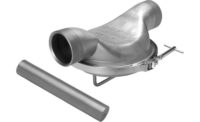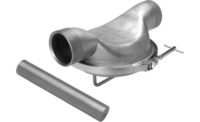AMIF studies show effectiveness of antimicrobials in use today against a wide range of pathogens

Researchers evaluated the efficacy of six commonly used antimicrobials on Escherichia coli O157:H7 and non-O157 shiga toxin-producing E. coli (STEC) serogroups O26, O103, O111 and O145 on beef. The antimicrobial compounds used were acidified sodium hypochlorite, peroxyacetic acid, FreshFx, lactic acid, activated hydrobromic acid and hot water.
The degree of effectiveness depended on the antimicrobial compounds used. Hot water was the most effective in reducing pathogens tested, followed by lactic acid. Acidified sodium chlorite and activated hydrobromic acid showed less immediate effect, but increased effectiveness after chilling for 48 hours at 4°C.
Despite the reduced effect of these antimicrobial compounds, the recovery of these pathogens with low inoculation levels indicated that one of the following possibilities could occur: (a) the solutions might not be applied uniformly to all of the surfaces since carcasses have irregular shapes and surfaces, causing over-exposure to the treatment on one part and under-exposure on another; (b) even with a uniform spray, all antimicrobial compounds will not only inactivate the bacterial cells, but also inflict sub-lethal injury to the cells. At a suitable environment, sub-lethal injured cells repair their injury, gain their normal characteristics, and subsequently initiate multiplication.
The report can be read at http://www.amif.org/ht/a/GetDocumentAction/i/70695.
A complementary AMIF study by the same research team evaluated the efficacy of those same six antimicrobials on non-O157 STEC O45, O121 and non- and multi-drug resistant (MDR) Salmonella strains. The final report provides a similar conclusion, noting that all antimicrobial compounds used by the beef industry were effective against non-O157 STEC and Salmonella.
The reductions of these pathogens on inoculated fresh beef with tested compounds in general, were as effective against non-O157 STEC as E. coli O157:H7. The degree of effectiveness again depended on the antimicrobial compounds used.
In this study, lactic acid, hot water, and acidified sodium chlorite were more effective in reducing pathogens. FreshFx had an intermediate effect, while peroxyacetic acid and BoviBrom had the least effect. The effectiveness of these compounds on non-MDR and MDR was inconclusive and possibly strain dependent, but Typhimurium were more resistant than Newport.
Despite the reduced effect of these antimicrobial compounds, the recovery of these pathogens with low inoculation levels indicated that one of the following possibilities could occur: (a) the solutions might not be applied uniformly to all of the surfaces as carcasses have irregular shapes and surfaces causing over-exposure to the treatment on one part and under-exposure on others; (b) even with a uniform spray, all antimicrobial compounds will not only inactivate the bacterial cells, but also inflict sub-lethal injury to the cells.
An enumeration with selective medium may overestimate effects of the antimicrobial interventions used. It should be noted that in a suitable environment, sub-lethally injured cells may repair their injury, gain their normal characteristics, and subsequently initiate multiplication.
The final report is available at http://amif.org/ht/a/GetDocumentAction/i/72853.
Additional AMIF-funded research was recently conducted by Colorado State University to determine whether interventions known for reducing E. coli O157:H7 contamination on beef trimmings are also effective in reducing non-O157 STEC, and MDR and susceptible Salmonella Newport and Salmonella Typhimurium. The interventions evaluated were lactic acid, acidified sodium chlorite, peroxyacetic acid, sodium metasilicate, Bromitize® Plus, SYNTRx 3300 and AFTEC 3000.
Findings indicated that the antimicrobial effects of these decontamination treatments against the non-O157 STEC serotypes and S. Newport/Typhimurium antibiotic resistance phenotypes were generally the same as those against E. coli O157:H7.
The final report is available at http://www.amif.org/ht/a/GetDocumentAction/i/72071.
For more information, research and education from AMI Foundation, visit www.amif.org on the Web.
Looking for a reprint of this article?
From high-res PDFs to custom plaques, order your copy today!






